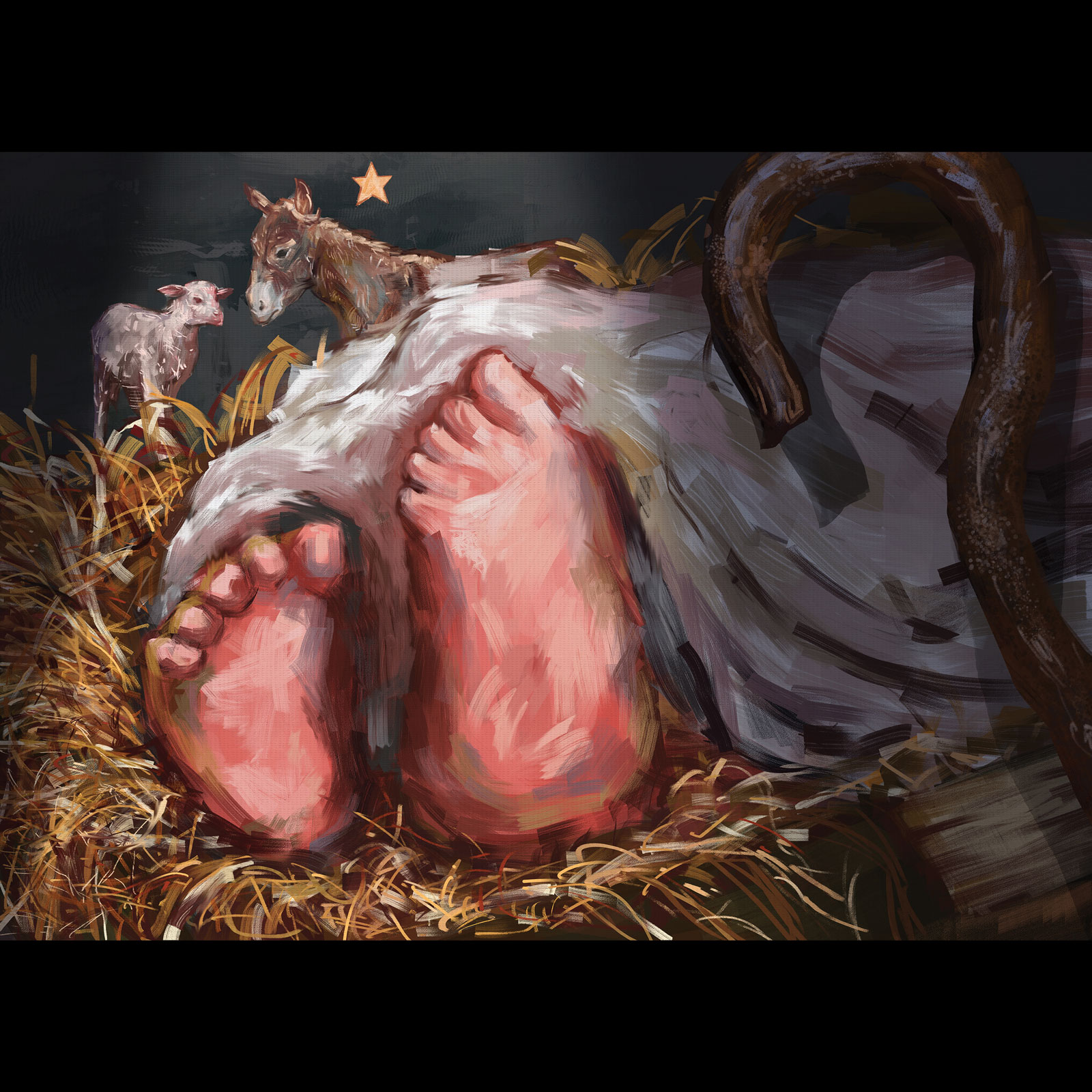 Image Credit: Seungwon Hong
Image Credit: Seungwon Hong
Christmas Uncovered
Challenge yourself to search for the truth of Christ’s incarnation and what that means for you and the world.There is a lot we don’t know about Christ’s birth. The author of the Gospel of Luke attempts to give an orderly and researched account, but there are a lot of details missing. Even the information we do have is often corrupted by well-meaning Christmas pageants, TV specials and Nativity creche sets. We also have 2,000 years of history separating us from the event; we exist in a culture quite different from first-century Palestine. There are a lot of barriers from us understanding the specific facts, but there are some things that scholars have been able to research and shed light on that can empower us and embolden us in our faith.
Jesus’s birthday is celebrated on December 25, but that was a day chosen by the Church in the fourth century. The western Christians chose to celebrate Christ’s birth on the same day that honored the pagan festival of the sun, also known as Saturnalia. The eastern Church celebrated His birth on the same day they celebrate His baptism (Epiphany) on January 6. Oriental Church traditions celebrate His birth on April 21 or May 20. Though the western calendar is set by the birth of Christ (A.D. 0), scholars now recognize that His actual birth was probably sometime between B.C.E. 4-7, during the spring or fall.
Infancy Narratives
Infancy narratives, or birth stories, were a specific genre of writing and storytelling from Jewish literature found in the Scripture and extra-biblical material. There are many characters in the Bible who also have birth stories told (think of Jacob, Isaac, Moses, Samuel, Samson, Jeremiah, etc.)—usually important heroes of the faith or prophetic figures. Jesus’ birth story fits the genre, placing Him in a wider biblical and faith context as an important figure whose birth comes by divine means and giving Him authority as a prophet.
“Mary is important for so many reasons, but most namely because it is t hrough Mary that Christ takes on flesh and humanity.”
Mary the Mother
Mary was named after Moses’s sister (the prophetess Miriam) by her parents who, by Church tradition, were called Joachim and Anna. Her name was extremely common, meaning “bitter,” and points to her common and poor upbringing in a time of oppression and colonization. Mary was extraordinary, though. She was chosen to be the mother of Jesus—and she consented. Scripture says that her pregnancy was miraculously caused by the Holy Spirit even though she was a virgin. Protestant tradition states she doesn’t remain a virgin her whole life, and instead goes on to have more children with Joseph (the half brothers and sisters of Christ mentioned in Scripture). Mary is important for so many reasons, but most namely because it is through Mary that Christ takes on flesh and humanity.
Bethlehem and the Inn
Bethlehem is also known as the “City of David.” David had multiple wives and many descendants. There were many people who came from David’s line—and they were all obligated to go to Bethlehem for the census. As outrageous as it seems, Mary would have been legally required to attend the census even at the brink of childbirth. The city of Bethlehem is north of Nazareth and not far from Jerusalem, and Mary’s relative Elizabeth lived not that far from town. There is also nothing in the biblical infancy narratives that states Mary rode on a donkey to Bethlehem.
Some think of the “inn” of Bethlehem as a modern-day motel with many rooms for rent. This probably isn’t true. The word for “inn” found in the Nativity story of Luke is katalyma. A different word for “commercial inn” is used later on in the Parable of the Good Samaritan (Luke 10:25-37) that carries our more modern notion. In the story of Jesus’ birth, it is unlikely that Joseph was turned away because there were no motel rooms to rent, but rather people lacking physical space to grant asylum. The use of katalyma suggests that everyone’s houses were simply too crowded, which is why the only space available was where the animals were.
“As outrageous as it seems, Mary would have been legally required to attend the census even at the brink of childbirth.”
The Manger
The place where Mary gave birth was no barn. Much of Christian tradition asserts Christ was born in a grotto or cave that functioned as a holding place for the animals. Many Ancient Middle Eastern homes consisted of two rooms: one for family living and one for guests. The guest room could be found on the roof or often attached to the back. The door to the home often entered to an entryway and stairs that led up to the main living room. It was common at night to bring the animals into the home entryway, block off the stairs and cut feeding troughs in the floor in the main family sleeping space. This kept the animals safe from theft and kept the home warm.
Understanding the manger in this way makes the appearance of the shepherds even more powerful. The impoverished shepherds were able to go to a home, not unlike their own, and see the King of the universe nestled humbly in a feeding trough. God honored the poor and humble by becoming like them and used the images they were familiar with to help them understand that salvation was for everyone, especially the lowly.
The Star and the Magi
There are some who will argue for an actual astronomical phenomenon on the night of Jesus’ birth, which lead the Magi to Jesus. Was it a comet, a supernova or a planetary conjunction of Jupiter and Saturn? We don’t know. Theologically, the star connects to Numbers 24:17 which speaks of a star coming out of Jacob, commonly interpreting the star as the coming Messiah.
We know very little about the Wise Men, Astronomers, Magicians who visit Jesus. Tradition says there were three men who came from the East: Bathasar of Arabia, Melchior of Persia and Gaspar of India, but this is not in the biblical account. The number three is thought to come from the three gifts of frankincense, gold and myrrh. “East” could have been anywhere east of Rome, or more likely, east of the Jordan River.
Christianity is a relationship with the living God, and it involves both faith and reason. Jesus asks His followers to use their minds to process and question their faith. It’s true that we don’t have all the facts about the Christmas story. There are a lot of details that are murky at best. However, we should be cautious to always recognize that there is a difference between fact and truth. The biblical accounts of Christ’s birth give us the truth we need to begin to understand how the incarnation of God as a human being is vital to our salvation and the salvation of the universe. This Christmas, challenge yourself to search for the truth of Christ’s incarnation and what that means for you and the world.
FOR FURTHER STUDY
Books:
- Jesus Through Middle Eastern Eyes by Kenneth E Bailey
- The Real Jesus Then and Now by Geza Vermes
- In the Fullness of Time by Paul L Maier

Courtney Rose is a learner, teacher and a devout Christ-follower. She is passionate about the Bible, theology, and helping others love God and the Church more. She is married to Justin and is mother to Simeon and Miriam. She proudly serves as a Salvation Army soldier (member) in Chicago and works as the Young Adult Ministries Coordinator for the Metropolitan Division.



